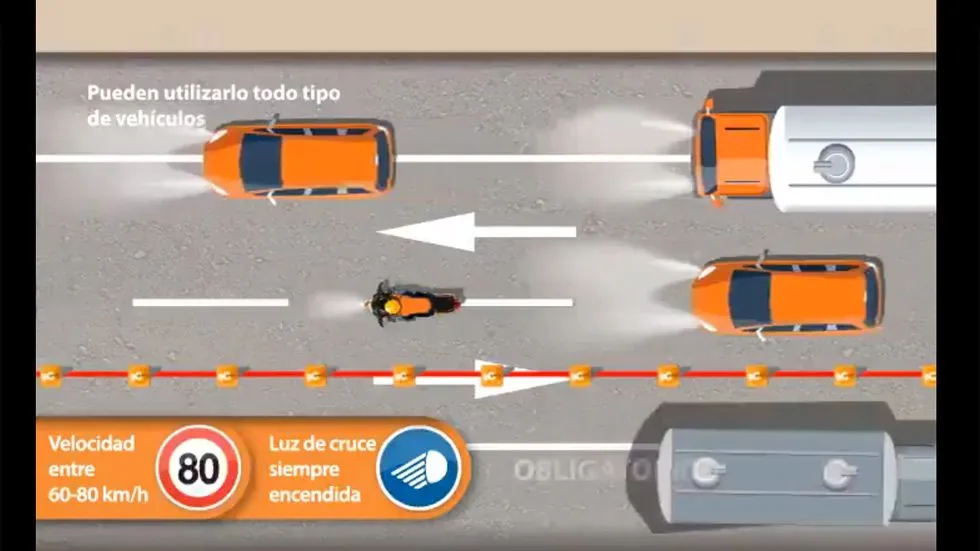During special traffic operations, such as those implemented during the busiest periods in the summer, co-called “additional lanes” are created to ease the flow of traffic in certain areas, but the question as to what those lanes are and how we deal with them requires answering.
When we talk about “additional lanes”, there are four variations we normally speak of:
- Contrary to the usual direction
- Additional lane
- High occupancy, or VAO lanes
- Reversible lanes
Each one of them works in a certain way and with its own traffic regulations that should be known to avoid incidents, or, of course, potential fines.
Contrary to the usual direction
These additional lanes are the most frequent. They are usually at the entrance or exit to cities and usually only allow the circulation of passenger cars without a trailer and motorcycles. Its implementation is simple, the Guardia Civil is in charge of opening one of the accesses that are in the medians of the motorways and utilises a lane normally used by traffic from the opposite direction, by using cones.
In this case the law is very clear, we must drive with the lights on and at a speed between 60 and 90 kilometres per hour. Cars traveling in the remaining lane in the correct direction must also turn on their lights and respect the 60/80 km/h limitation.
Additional lane
Sometimes, the Guardia Civil will create an extra lane by reducing the width of the other lanes of the road and enabling the hard shoulder. In this way the capacity of the road is increased. You must drive with dipped headlights on and with a maximum speed between 60 and 80 kilometres per hour, which affects all lanes of the road. Bikes, mopeds or special vehicles are not permitted.
VOA lanes
High Occupancy Vehicle Lanes, or Vehículos de Alta Ocupación (VAO), are fixed and permanent lanes, although with usage regulations that normally allow access to buses, vehicles with more than one passenger and vehicles with a Zero eco-label. Sometimes they vary in the direction of circulation depending on the time of use. They have very few outlets, which complicates their use. The speed is the same as the road.
Reversible lanes
Reversable lanes are typical of urban environments and allow the direction of traffic to be varied depending on the time and the volume of traffic. Thus, they have signalling in both directions that indicates when it is open and when it is closed. It requires driving with low beam and the speed is the generic one of the road.





